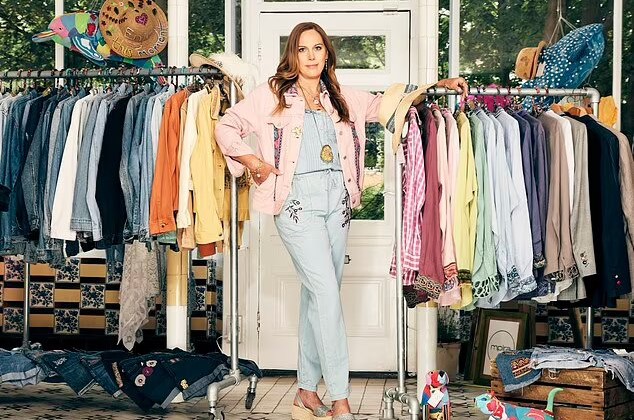Rachel Stepanek’s trip to Kenya took an unexpected turn when she stumbled on clothes she had designed being sold as second-hand clothes (Mitumba) in the streets of Nairobi.
Stepanek, a then-fashion designer based in the United Kingdom, also revealed that some of the clothes she stumbled on were in a poor state, a sad reality that prompted her to step out of her career.
”As I stood at the edge of a Kenyan street market, my eyes scanned the thousands of piles of second-hand clothing on sale before resting on one item — a khaki canvas utility jacket covered in badges. My heart sank as I immediately recognized it as one of my own.”
”I was the person who had designed it just six months earlier. Now it lay at my feet in a dusty African street on the outskirts of Nairobi,’’ she stated in an article on Daily Mail.
With lots of questions on why her clothes could move to rejection in less than a year, Stepanek decided to take a break from fashion to think of a new direction that would not land her sweat on the soil.
”Soon after that awful epiphany, I took a year out from my career to think how I might stay in fashion without adding to the burden it puts on the planet. I never went back.’’
My hubby and I want to quit 500k salary jobs to relocate to Canada or Australia
”Those feelings played a big part in my decision to quit my job in 2017. Even now, every time I spot clothes I designed lying in the Kenyan dirt in photographs, I feel sick about it.’’ she added.
Before stepping out of her 30-year career in the fashion industry, Stepanek had dressed various celebrities in the entertainment industry.
She also worked with major High Street brands in the UK, designing various forms of clothing ranging from dresses, blouses, knitwear, occasionwear, and sleepwear.
She notes that big chunks of second-hand clothes in Kenya are part of clothes donated to UK charity shops. According to Oxfam, more than 70 percent of the clothes donated globally end up in Africa.
“The items [charity] shops fail to sell or which they reject are considered for resale elsewhere,” says Oxfam.
Kenya is one of the largest importers of second-hand clothes in Sub-Saharan Africa. Data from the Mitumba Consortium Association of Kenya (MCAK) showed that the Kenyan government earned a total of Ksh15.85 billion in taxes from the Mitumba sector in 2021, the highest in the East African region.
Patricia Too: I rejected Italian dream to become county commissioner at 25
A study by the Institute of Economic Affairs and Mitumba Consortium Association of Kenya in 2019 revealed that 91.5% of households buy second-hand clothes worth Ksh.1000 and below.
The report also highlighted that Kenyans spent about Ksh.197.5 billion, an average of Ksh.4,150 per person per year, for all purchases of second-hand and new clothes and footwear.
This is attributed to the fact that second-hand clothes are cheap and durable. The sector is also said to be a source of income for over 3 million people.
However, part of these clothes are a threat to the country’s environment due to pollution. An investigation by Clean Up Kenya and Wildlight for the Changing Markets Foundation (CMF) revealed that Mitumba is essential ‘fashion waste’ .
CMF says some of these clothes are too dirty and damaged to be reused, thus creating serious health and environmental problems for vulnerable communities in the country.








